I was confirmed in the Episcopal Church in seventh grade. I was told that by being confirmed I would express a mature commitment to Christ and received strength from the Holy Spirit through prayer and the laying on of hands by a bishop. (It didn’t last very long).
On Sunday afternoons I went to catechism class at the Church of the Redeemer in Bryn Mawr. It was a little less than a mile from my house. I usually walked.
Rote memory was the order of the day. I remember two things. First was walking home with Doug Taft who would grab my arm and draw all over it with a ballpoint pen. Second was the definition of sacraments. To this day, more than 50 years later, I remember this question and answer from the catechism.
Q. What are the sacraments?
A. The sacraments are outward and visible signs of inward and spiritual grace, given by Christ as sure and certain means by which we receive that grace.
What stuck with me was the phrase “outward and visible signs of inward and spiritual grace.” As I have started knocking on Berkeley doors to meet the people who create our quirkiest front yards, I have come to understand that the front yards are often an outward and visible sign of inward and spiritual quirkiness. As in – often the tip of the iceberg.
The front yard at 1231 Curtis is filled with outward and visible quirky signs.
As is the front yard on the other side of Curtis, a few houses to the north, and in a similar fashion:
And we have seen these SUV’s around Berkeley.
They are named LUVeRmobiles. They belong to the people in the houses on Curtis. Except for the one on Hopkins just above the intersection with Cedar – they bought it from the Curtis Street group.
What is going on here?
Mikee LaBash and Linda Mac answered the door at 1231 Curtis. It currently is leading the pack for the coolest door in Berkeley.
Mac grew up in Philadelphia, a daughter of the City of Brotherly Love! North Philly, South Philly, and then Abington Township. She went to Penn State and in 1974 came to Berkeley where she found a job at a travel agency. She was in a holding pattern, she says, hanging, waiting for her life.
Frank Moore came into the travel agency. She leaned over to talk to him. He looked down her shirt and offered her a part in a play. A play that may or may not have existed. It didn’t matter. Prayer answered! The photo above is from about the time that Mac met Moore.
These photos show Moore and Mac’s father Ed in the mid 1970’s.
Mikee LaBash was born in Indiana, raised in Sydney, Australia, and returned to Indiana to attend the University of Indiana – a BFA. In the 1980s, he worked as a graphic designer in San Francisco.
He was the lead singer and songwriter for the band Mr. Dog. Bandmate Dave Bryson a few years later would help found the Counting Crows. LaBash attended a Frank Moore performance at Rather Ripped Records in Berkeley where Frank had naked body-painted dancers swirling around him with strobe lights flashing and fog machines and LaBash thought, “This guy knows how to have fun with his art!” A few weeks later Mikee quit the band. He continued his graphic arts work, but no more Mr. Dog.
They (“they” meaning Linda Mac and Mike LaBash) invited us (“us” meaning Colleen Neff and me) inside. What a house! The front yard doesn’t qualify as even the tip of the tip of the iceberg. The walls are covered with paintings and drawings and photographs, evidence of Frank Moore’s vision and LaBash’s graphic genius.
The first thing you see when you come in the door, to the degree that you can focus on any one thing, is an upright piano.
Nicely painted by LaBash.
Art abounds.
The paintings are all by Frank Moore. The woman in the center of this photo is Patti Smith, whom Moore met at Rather Ripped Records.
Behind the house is a studio where Moore met with people.
This is a board that Moore used to talk. With a pointer affixed around his head, he would point to commonly used words or would spell words out by pointing to letters.
“Talking to people through my board has intimate qualities. It slows people down, bringing them into a softer, smaller, more focused reality. It also reveals things about them through Freudian slips, etc. Through the years I have designed the board around the other person who is reading the board, rather than around me.”
He painted similarly, with a paint brush on his forehead. He painted one quarter of a canvas at a time because that is all that he could reach. If you are keeping score at home, that meant that he painted upside down and sideways.
So who, you ask, was Frank Moore?
I find it difficult to condense what I have heard and read about Frank Moore.
For one, I don’t know jack about performance art or shamanism. New territory for me. And here we have four-plus decades of something I don’t know jack about. With a multiplier of a long and prolific creator.
For two, there is a question of language. Moore pushed the envelope. He colored outside the lines. He knew no boundaries. He reached for the stars and shot the moon. Our daily lexicon doesn’t serve well when trying to describe what Moore was and did. Our language seems too confining. In fact, Moore acknowledged this himself, and he published a pamphlet “Definitions of States of Magical Play,” with words he coined and words he repurposed with new meanings. He explained: “I realized that one of the things that was undermining my work was the English language. There was no word, no name for the force I was dealing with. My first task was to create a new word: eroplay.”
Here is what did not define Frank Moore:
- He was born on June 25, 1946.
- He died on October 14, 2013.
- He had a severe case of cerebal palsy, a group of permanent movement disorders. He could not walk or talk.
As I said, none of those facts defined him.
Cerebral palsy is a confining, defining condition. Moore’s parents rejected suggestions that their child had no intelligence and should be placed in an institution. They rejected, he said, cultural expectations, and they had to “passionately live their choice every day, every minute” caring for Moore at home.
Cerebral palsy’s chains drove Moore to nearly pure freedom, to pursue what he called “nonrational, nonlogical, nonlinear magical knowledge.” He declined to be confined or defined. He wrote that his chains were his salvation: “It was just my luck to be born into the long tradition of the deformed shaman, the wounded healer, the blind prophet, the club-footed ‘idiot’ court jester.” Diane Arbus photographed freaks. She explained why: “Most people go through life dreading they’ll have a traumatic experience. Freaks were born with their trauma. They’ve passed their test in life. They’re aristocrats.” Get it?
Forget the not walking and not talking – he wrote many books, directed plays and films, gave poetry readings, played piano, sang, and painted. I think of the famous quote about Ginger Rogers and Fred Astaire- “Sure he was great, but don’t forget that Ginger Rogers did everything he did, backwards and in high heels.” Moore did everything he did without the ability to walk or talk.
Moore was not afraid to fail. He saw himself as a revolutionary, and wrote that revolutionaries are “mutations of evolution.” While acknowledging that most revolutionaries fail, he believed that “even in failure, change and new possibilities are created.”
In a somewhat linear fashion, here are some highlights from the public life of a man who shunned the thought of linear anything.
After dropping out of college in California, Moore lived in New Mexico.
He found life too comfortable, and so went to Warwick/Northfield, Massachusetts and lived in the Brotherhood of the Spirit commune. It was in existence from 1968 through 1988, under the charismatic leadership of Michael Metelica. The commune’s spiritual belief system was based on aspects of Buddhism, New Age thinking, Gnostic Christianity. reincarnation, meditation, and the power of positive thought.
He danced with the commune’s band the Spirit in Flesh. After a year there, he moved back to New Mexico with a wife to build a “personal community.” With a “communal family of four as a core,” he started drop-in workshops at a pre-school. In 1973, he did his first 24-hour performance, enchanted with “the magical quality of extended time lengths.”
His art there was too radical for the small town, so he and his community of seven moved to New York. They set up shop at 32nd and Fifth Avenue, and began performances. In 1975 he left New York, feeling that he”never broke into anything.” Moore moved to Berkeley, hoping to form a “tribal body” here built on a group marriage.
The “tribal body” in Berkeley eventually included Moore, Mac, LaBash, and three others, Corey Nicholl Alexi Malenky, and Erika Shaver-Nelson. They evolved into two houses on Curtis, the Purple House (1231) and the Blue House (1200).
He worked as a relationship counselor, but from the start had big ideas. He evolved from relationship counselor through performance artist to shaman, although”through performance artist” is misleading on account of that never stopped. His performances were often very long, ritualistic, and featured nudity, eroticism, and audience participation.
Moore cited as major influences Anna Halprin, the Living Theatre, Richard Schechner, Jerry Grotowski, and Antonin Artuad. Much of what he did over the years he called shamanistic art, which he described as “a focused use of rituals to call forth dream trance in which reality can be reshaped in nonlinear ways.” I don’t pretend to know what that means.
In the late 1970s, Moore created The Theater of Human Melting and produced the Outrageous Beauty Revue.
For the Revue, Moore partnered with Dirk Dirksen.
Dirksen, nicknamed the Pope of Punk, was a music promotor, the emcee at San Francisco’s Mabuhay Gardens, and the producer of all the shows at that time at Mabuhay Gardens, where many of the Moore performances took place.
This was a near hit/near miss on fame, something which Moore shunned. Moore wrote: “I had to work hard to not let it get big or lose its edge, to keep it underground where you have the most effect and freedom.” Over the years, Moore tried to keep his work “surfing just below the ‘fame wave.'”
In 1988, Moore was featured in Mondo New York, a film about performance artists.
In 1989, Moore ended up on the receiving end of the Christian Right’s attack on art and NEA funding of art.
The moral panic started with Senator Alfonse D’Amato denouncing Andres Serrano’s photograph Piss Christ. Senator Jesse Helms jumped in and became the face of the movement, screeching that the art was “shocking, abhorrent and completely undeserving of any recognition whatsoever.” The driving force behind the moral panic was the American Family Association from Tupelo, Mississippi. The mission of the American Family Association is “to inform, equip, and activate individuals to strengthen the moral foundations of American culture, and give aid to the church here and abroad in its task of fulfilling the Great Commission.”
The controversy spread to the photographs of Robert Mapplethorpe, and in the spring to 1990 to performance art pieces by Karen Finley, Johanna Went, Cheri Gaulke, Holly Hughes, Tim Miller, Annie Sprinkle, John Fleck, and Moore. Dick Armey called the performance pieces “morally reprehensible trash.” Moore wrote Helms directly, accusing him of creating “a political and cultural blacklist under the cover of obscenity.” Alluding to Ken Kesey’s One Flew Over the Cuckoo Nest, Moore came to refer to the censorship efforts as part of the “Combine Plot,” a term which he used to mean something that was internalized by people so that they limited or censored themselves. The combine plot was, he asserted, “a hidden dynamic system of power, control, and interest that keeps the tools of creation and effective change out of the hands of the common people.”
In 1991 he served as a visiting artist at the Art Institute of Chicago.
He started a zine that year, the Cherotic r(E)volutionary.
Moore described it as a “post-porn sex zine.” It ran until 1999.
He had a show on Berkeley public access cable. Mac and LaBash still produce the show from Moore’s archives.
The Berkeley City Council tried to ban the show in 2002. They failed.
He launched an internet show.
The “shows” were usually two hours long, or longer. There were bands, poetry readings, talks. This evolved into luver.com, a “radical24/7 station with all kinds of music, news and whatever shows.” It became what Moore called “a black hole for our time and money.”
The January 29-February 4, 2003 issue of The East Bay Express featured Moore on its cover.
This is the photo used on the cover. Headlines screened over some of the private parts.
The tease for the article was “Frank Moore’s performances feature nude grope-a-thons with no apparent point. Is it possible that they’re art?”
In 2006, Moore declared his candidacy for president of the United States.
He qualified as a write-in candidate in 25 states. His platform reads like an early draft of a Bernie Sanders platform.
His running mate was Susan Block. Another daughter of Philadelphia! Bala Cynwyd to be precise, Block was two years behind my sister at Harriton High School. Gotta represent, as my daughter Charlotte would say sarcastically. Block is all about sex and pleasure and the bonobo. A whole other story, not to be told here.
Moore and Block didn’t win. They got what he described as “a handful of votes,” but that wasn’t the point.
Moore continued performing until shortly before his death from pneumonia in 2013.
Moore believed in day jobs. He wrote:
so keep your day job / get a day job you like doing / because art is your mistress of night / & you ain’t her pimp / she’ll take your money & time / she will take you into the basement of the unseen
LaBash works as a graphic designer. To see more (pun!), here is a link to the LaBash website:
A few examples of his art:
Alexi Malenky from the Blue House on Curtis works as a handyman.
Erika Shaver-Nelson works as the Director of Activities at the Chaparral House on Allston Way, a nonprofit Skilled Nursing Eldercare Community providing resident-centered care in a home-like environment.
Mac and LaBash continue to catalog and make available Moore’s work, both online and at the Bancroft Library. A link to Moore’s work:
Moore’s books are available at eroplay.com
and/or at Amazon.
I don’t know to what extent I could have gone with the flow at a Frank Moore performance. I suspect – not very long. Not wired that way. But I do know that sitting and talking with Mac and LaBash was enchanting – Moore through a filter. Their world is one that could not survive or even exist in many places on the planet. We are Berkeley, though, and they exist and survive and carry on.
In the copy of Frankly Speaking that Mac and LaBash gave me, they wrote “Glad you knocked on our door.” I am glad that they opened their door.
I showed the photo to my friend. “Wo, hold on! I KNEW that dude at Brotherhood of the Spirit in ’71. Awesome place. Moore, yeah, I knew him. Not here. Never here. Performance art ain’t my thang.”
Okay, good information. What about the overall deal here?










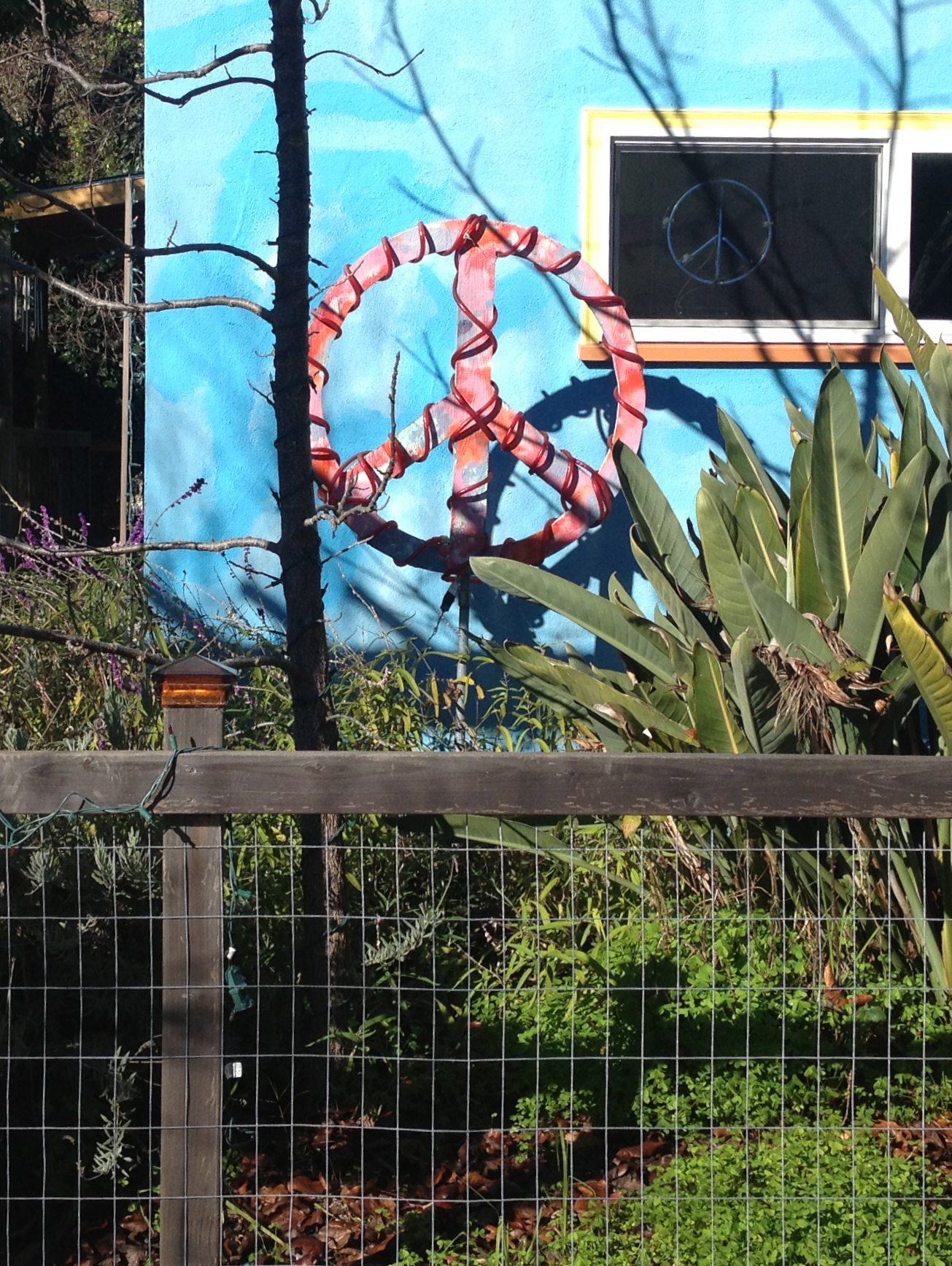

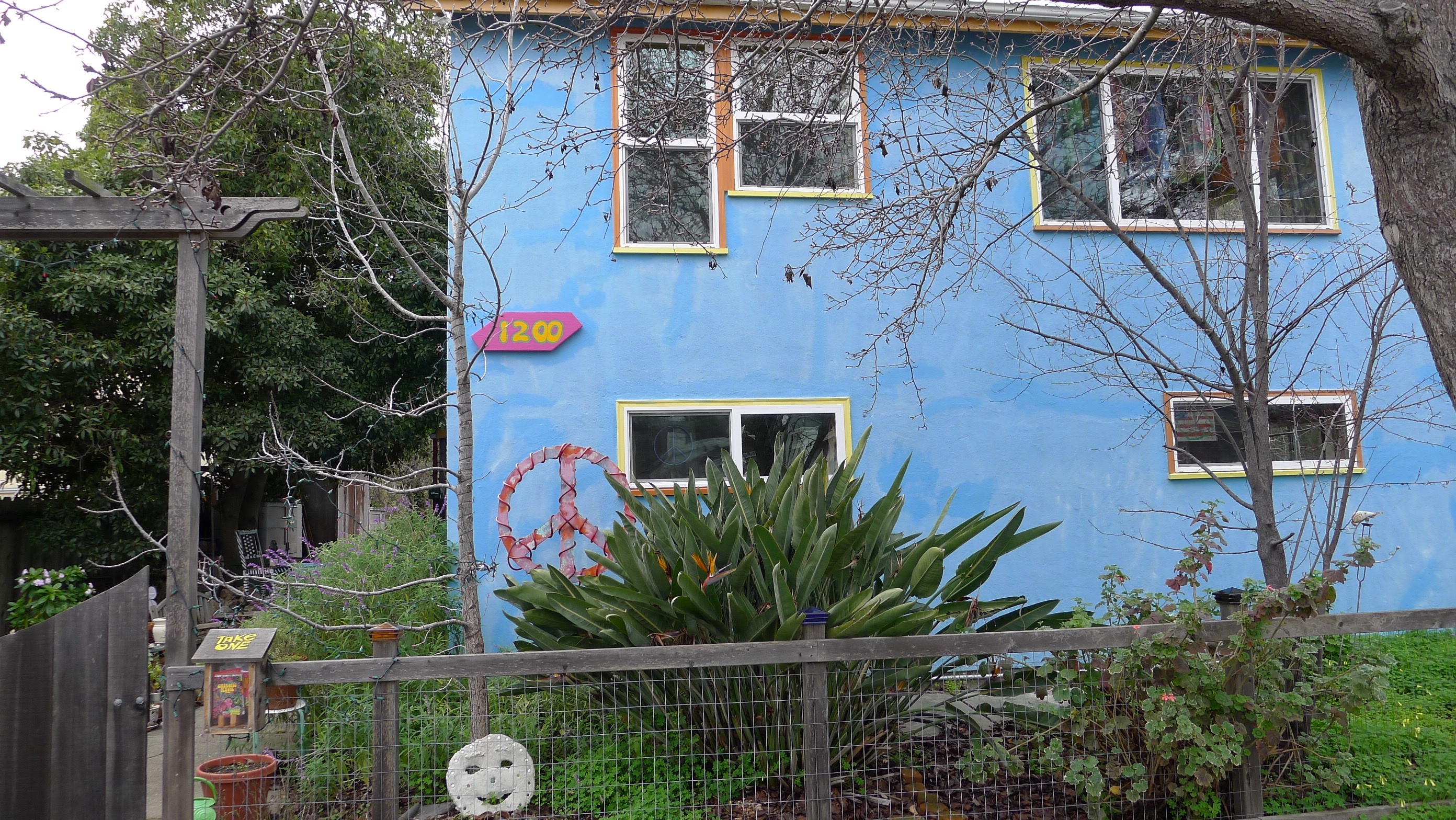



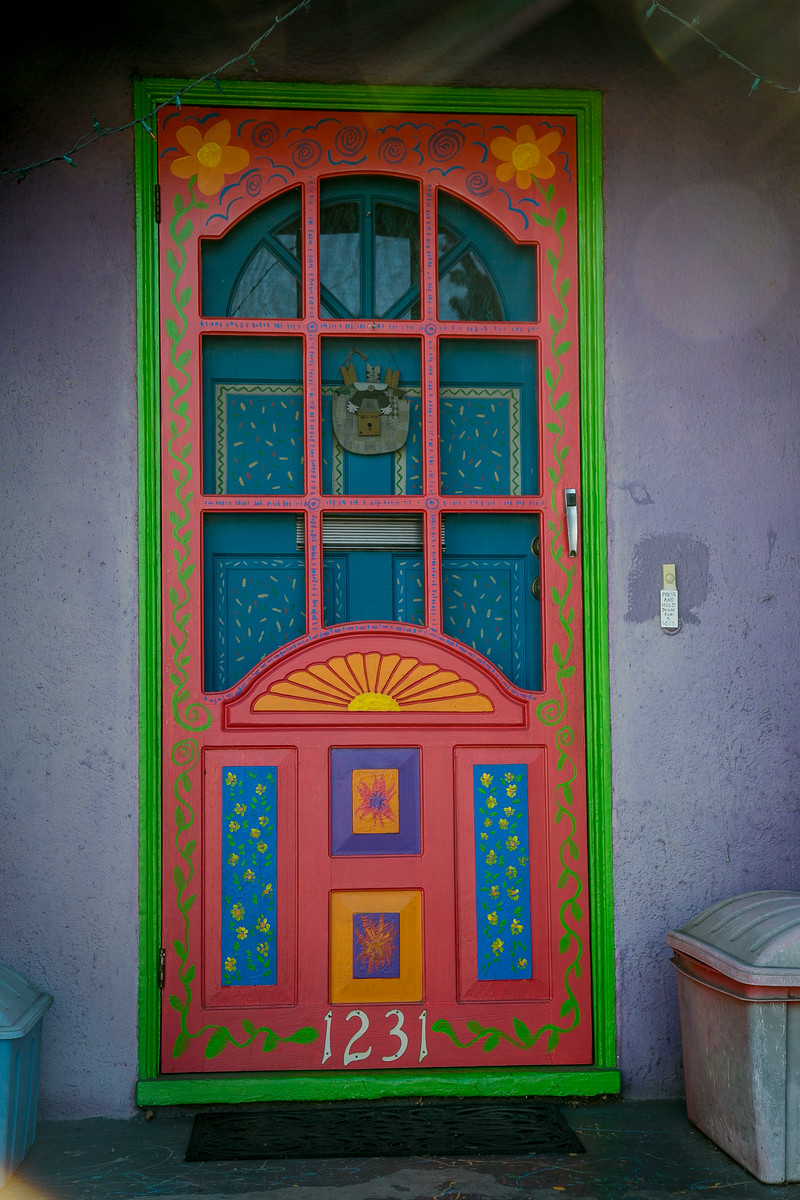
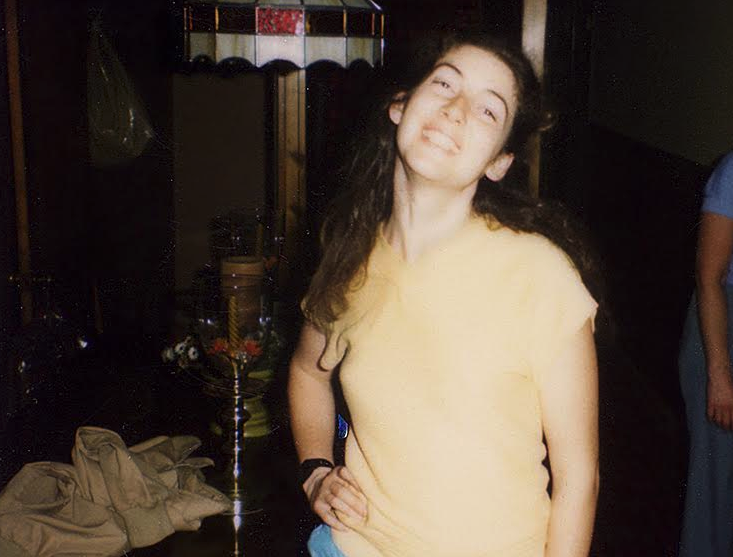











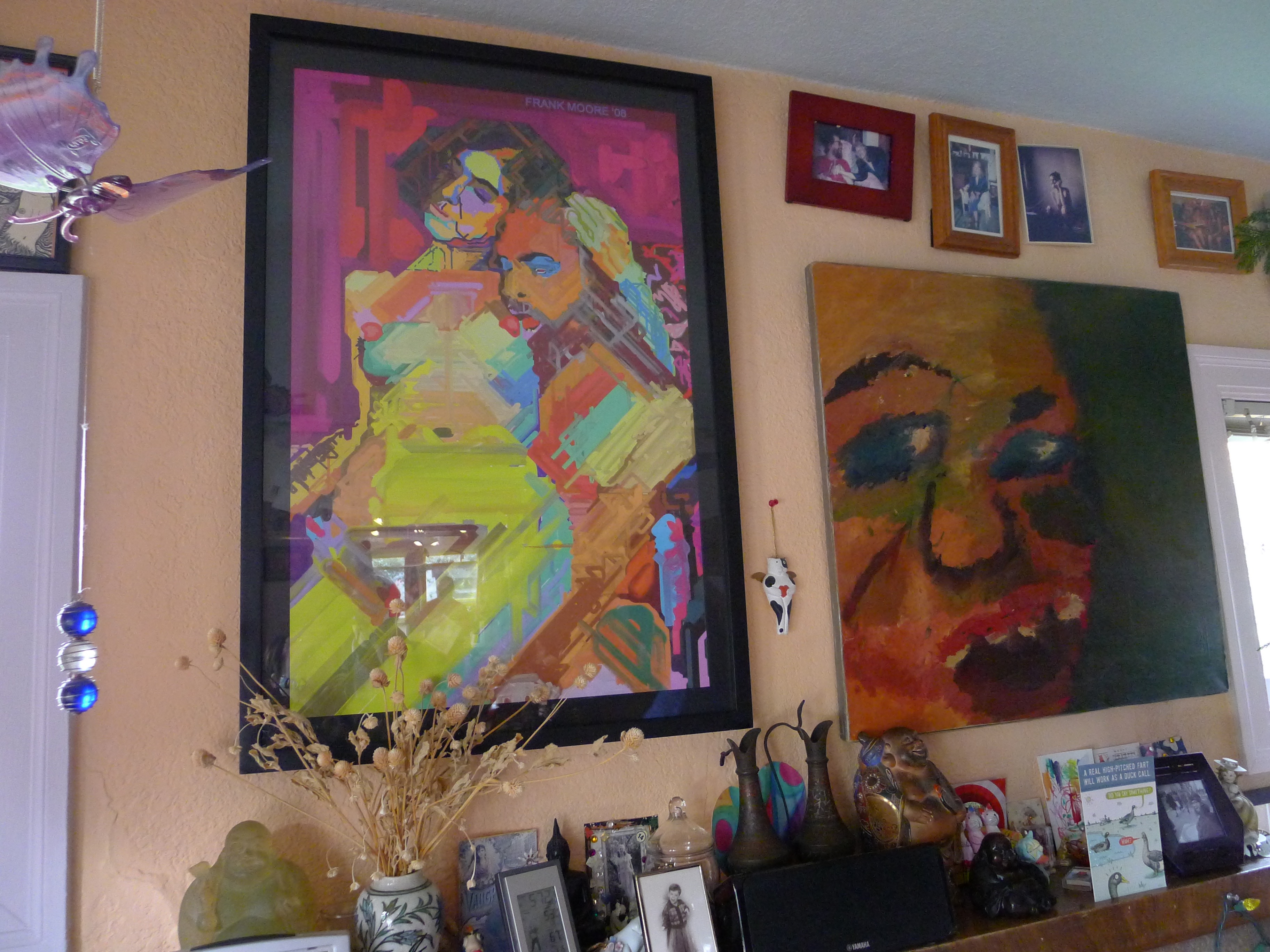








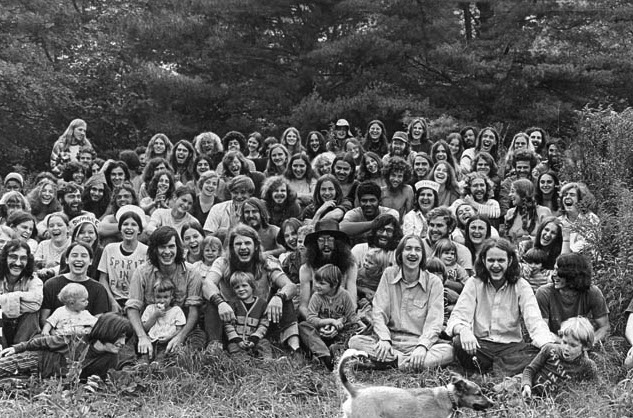












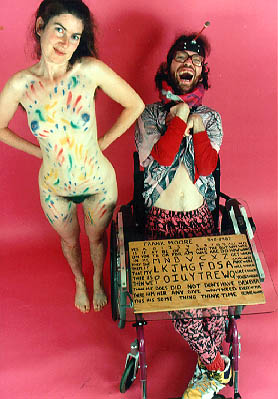















Wow — what a story! And with Main Line links. You’re weaving a mighty web, Mr. Tom.
Well – when I walked home from the Church of the Redeemer I walked on Fischer Road and if I am not mistaken the Fenimores lived just off Fischer Road.
That’s 2 clever by half and 2×2 clever 4 me. Thnsak!
Until I found this I thoguht I’d have to spend the day inside.
this takes quirky to a whole new level. Great article Tom. Great pictures Coleen!